By Joe Berk
The big photo above is shows three very real pandas. I took it in Chengdu when Gresh and I rode across China. It’s a little blurry because I was shooting through inch-thick super-smudgy glass. The photo is for attention only. This blog is about a different kind of panda.
Help us bring more to you: Please click on the popup ads!
When I was a pup back in the 1970s, I bought a Seiko chronograph watch in the Kunsan AFB Base Exchange. The Seiko model number was 6138-8020, and it was $67. I could have bought a Rolex there, too, but I remember thinking who spends $300 on wristwatch? Nope, it would be the Seiko for me.

The Seiko 6138 was an automatic (i.e., self-winding) watch. It became known as the Panda due to its two black subdials on its white face. I liked the Seiko a lot. I was a jogger in those days, and I used the Seiko every day to time my 3-mile runs. Life was good but I went on to other things. After the Army I worked in the aerospace industry, and like most engineers I went the digital route (I wore a Casio calculator watch). When Ebay became a thing I went on a decluttering craze and the Seiko went down the road. I got $80 for it and I thought I was pretty clever. Then I watched the price of a 6138 go through the roof. That may be why I collect watches now. I’m still trying to make up for that mistake.
I’ve missed my Panda over the years, and I started looking around to see what was available. There are several. In my opinion, Breitling makes the best (and best looking) Panda. Their Premier model is an awesome automatic watch, but who spends $7,299 on a watch?

The Hamilton automatic American Classic is another great looking Panda. That answers the mail for me, too, but it’s a little bit rich for my blood. The Hamilton goes for $1,541.
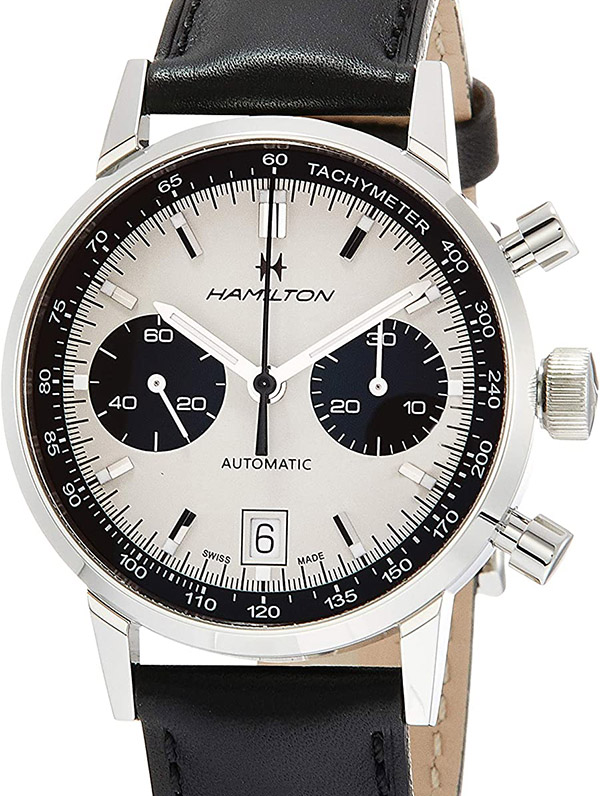
Seiko has a solar-powered Panda watch in their Prospex line that looks pretty good to me. It’s a $700 watch. If you shop around, you can find them for about $500. That’s not bad, but Seiko also makes that watch with a red and blue face and a red and blue bezel (informally known as the Pepsi), and one of these days I’ll probably pull the trigger on one of those. So, I took a pass on the Seiko Panda.

Bulova recently got into the Panda shtick as well, with a set of different colors on their Lunar Pilot watch:
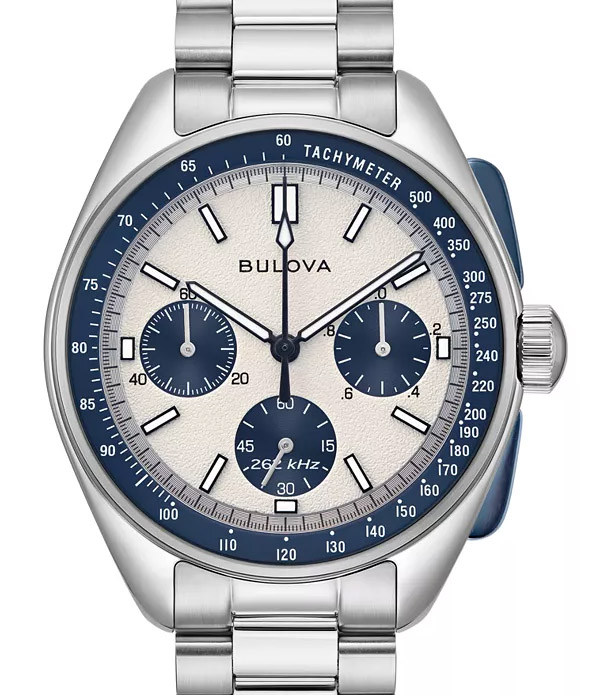
The Bulova is $895. It’s nice, but a few years ago I bought the black dial Bulova that emulates the watch astronaut Dave Scott wore to the moon. With a Lunar Pilot already in the collection, I wanted something else.
I’d been thinking about this Panda thing for a couple of years now, and looking at watches from time to time on the Internet, and you know where this is going. The Internet is insidious, and the marketing emails starting coming in. Amazon sent one on the Orient Panda and it was $188. Seiko and Orient are both owned by Epson (yep, the printer company), and I know Orient to be a good watch (I’ve written before about my Orient moonie automatic watch). Here’s the Orient Panda:
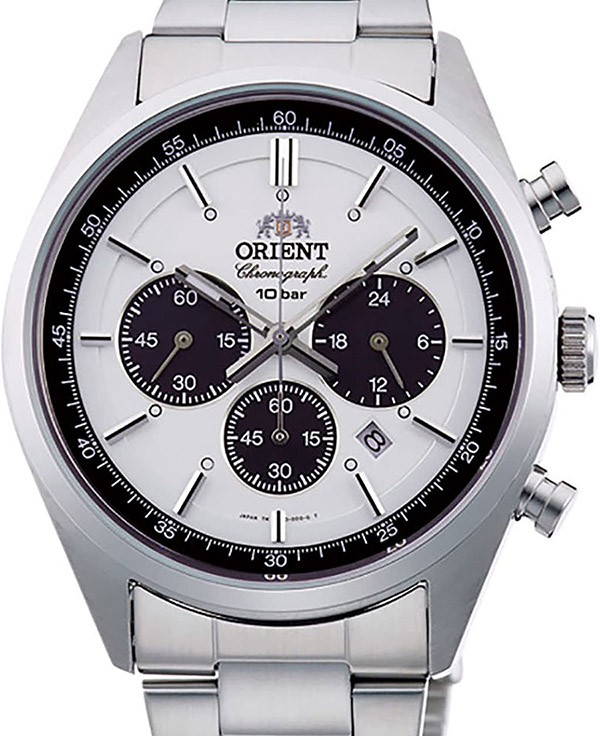
The Orient had great reviews on Amazon, and I liked the look. One thing I’ve learned the hard way is that it’s hard to judge a watch’s appeal by a photo. Some that look great in a picture are totally unappealing in person, and vice versa. But for $188, I’m willing to take a chance. When the watch arrives (it’s a non-US model and it’s shipping directly from Japan), I’ll let you know how it looks. I like the metal bracelet; I may spring for a black leather (with white stitching) band (like the Breitling’s) somewhere down the road.
A few general observations on the above watches. You may have noticed that the bezel rings are different between the Orient Panda and the others. The Orient has equally-spaced marks that show how many seconds have elapsed when the stopwatch is activated. All the other Panda watches have what is known as a tachymeter bezel. The idea behind it is that you can use the tachymeter for determining rate. If you activate the tachymeter when passing a mile marker and then stop it at the next mile marker, it will tell you your actual speed (as long as you are going faster than 60 mph). If you are on a production line, you can activate the stop watch when starting one item and stop the watch when the item is completed. Let’s say it takes 9 seconds to complete one item. The stop watch’s second hand will point to how many items can be completed in an hour (in this case, 400). The tachymeter is a cool feature but I have never used it, so the fact that it is not on the Orient is okay by me.
I’ve mentioned automatic and solar powered watches. An automatic watch is a mechanical, self-winding watch. For some collectors, there’s a panache associated with a mechanical watch. I feel that way, and I have automatic watches. The downsides of an automatic watch are that if you don’t wear them for a few days they stop and then you have to reset them, and they are less accurate (typical automatic watch accuracy is about ±25 seconds per day. Some are better than others. If you’re a fanatic about time, you’ll probably reset an automatic watch about once a week. For watch geeks that’s okay. We like playing with our watches.
Solar powered watches are essentially quartz watches that are powered by the sun instead of needing a battery. The downside is the watch has to be in the light (either sunlight or artificial light) a little bit each day to keep running. The upsides are that if you don’t wear a solar powered watch but keep it where the light hits it, it keeps running, and solar powered (and quartz regulated) watches are phenomenally accurate (to the tune of a few seconds per month). I have solar powered watches that I haven’t worn for a year or more, and they accurate to within a few seconds of the time.gov website. That’s pretty cool.
Back to that ride into Chengdu to see the real pandas…you can read all about it in Riding China. Here’s a short video of Joe Gresh and yours truly slogging through Chengdu traffic on Zongshen RX1 motorcycles.
Never miss an ExNotes blog:
More watch, motorcycle, tool, and other product reviews are here!


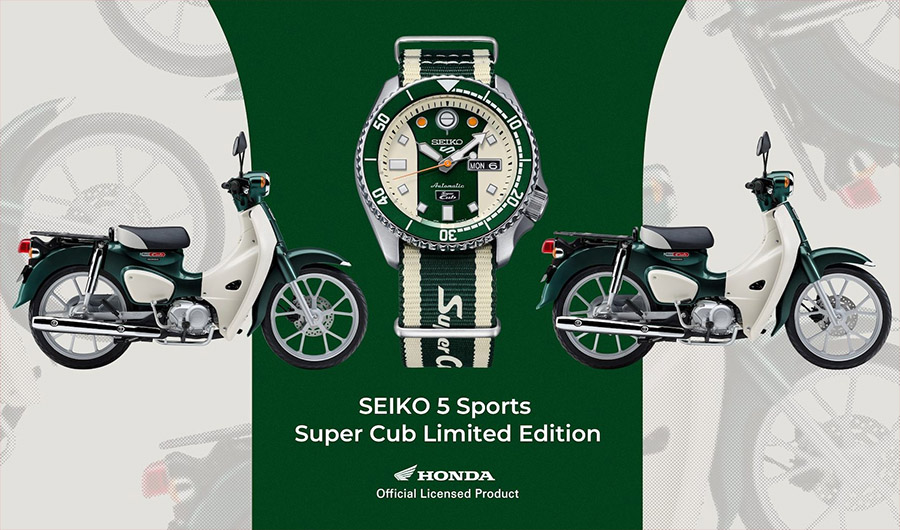
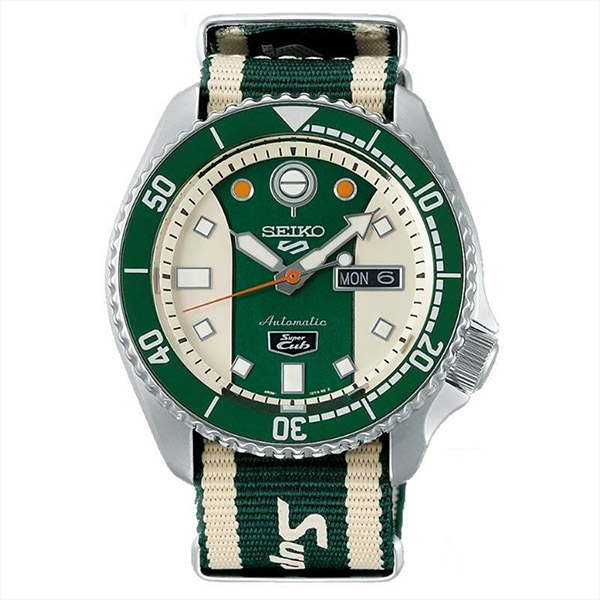
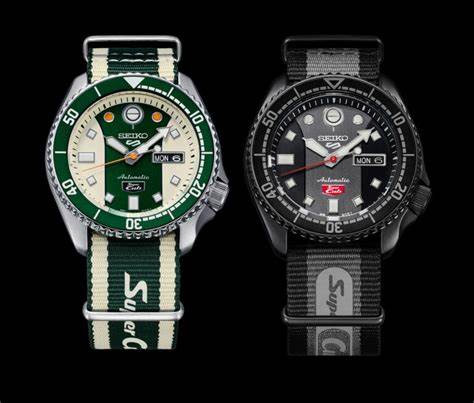

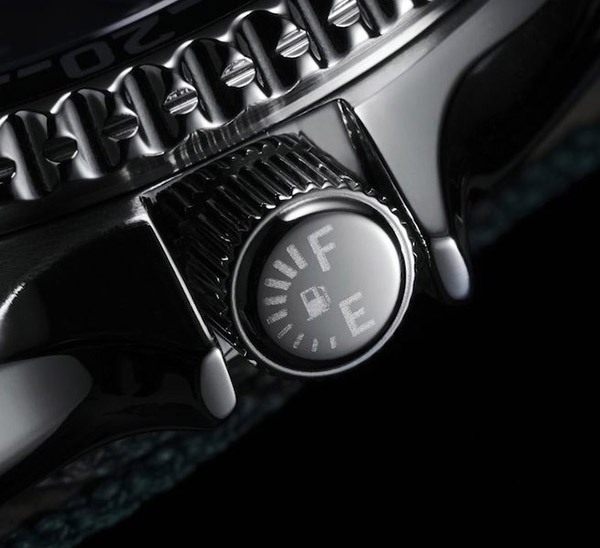

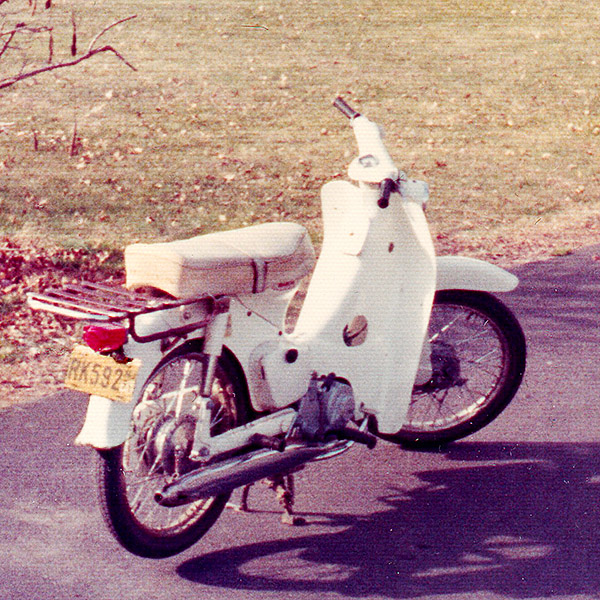

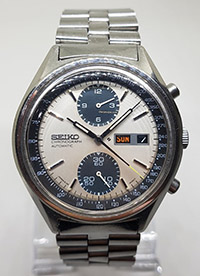 That Seiko watch you see on the right, known informally as “The Panda” in watch collector circles, is perhaps the best watch I’ve ever owned. I bought it at the Kunsan AFB Base Exchange when I was a young Army dude in 1975 for the princely sum of $76, which was a bit of a stretch for me. Oh, I had the bucks. The Army didn’t pay us much, but we didn’t have expenses, either, so $76 was eminently doable. In fact, I bought Seiko stainless steel chronographs from the Base Exchange for my Dad and my grandfather, too. Their watches were only $67, but the Panda had the day and the date on the face, and three timing features: Seconds on the main watch face, minutes on the lower subdial, and hours on the upper subdial. It was a beautiful thing and it was all mechanical. I wore it for about 10 years, and then when Ebay started to get popular I auctioned it away. I was quite pleased with the results. The watch that originally set me back $76 went for just north of $200 on Ebay 30 years ago. Today, though, that same watch brings around $2000. I sold too soon. Go figure.
That Seiko watch you see on the right, known informally as “The Panda” in watch collector circles, is perhaps the best watch I’ve ever owned. I bought it at the Kunsan AFB Base Exchange when I was a young Army dude in 1975 for the princely sum of $76, which was a bit of a stretch for me. Oh, I had the bucks. The Army didn’t pay us much, but we didn’t have expenses, either, so $76 was eminently doable. In fact, I bought Seiko stainless steel chronographs from the Base Exchange for my Dad and my grandfather, too. Their watches were only $67, but the Panda had the day and the date on the face, and three timing features: Seconds on the main watch face, minutes on the lower subdial, and hours on the upper subdial. It was a beautiful thing and it was all mechanical. I wore it for about 10 years, and then when Ebay started to get popular I auctioned it away. I was quite pleased with the results. The watch that originally set me back $76 went for just north of $200 on Ebay 30 years ago. Today, though, that same watch brings around $2000. I sold too soon. Go figure.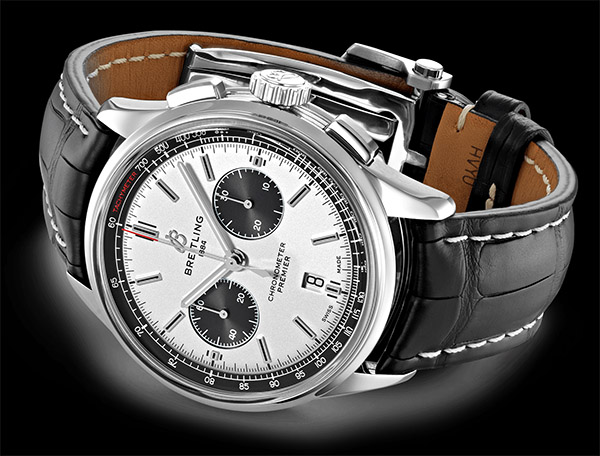

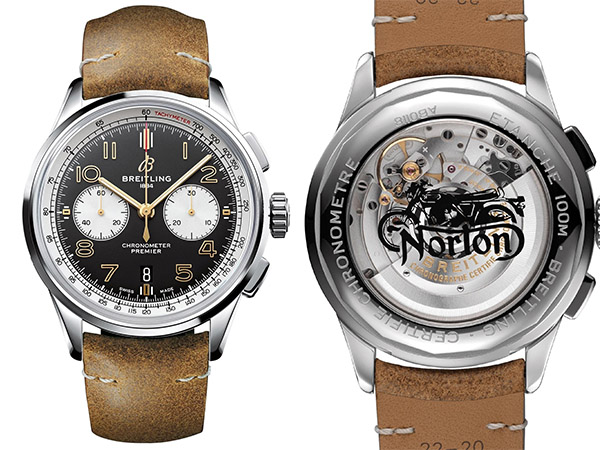
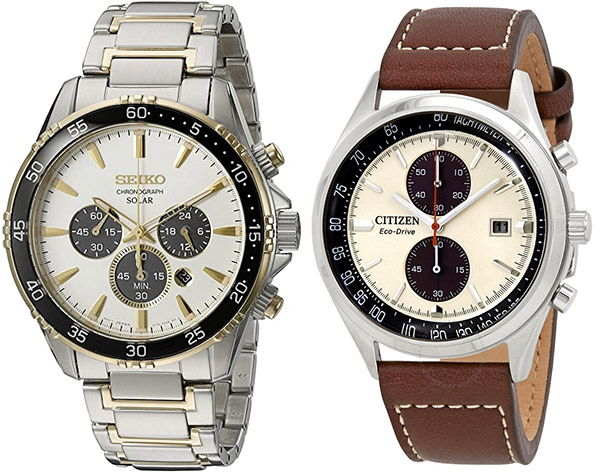
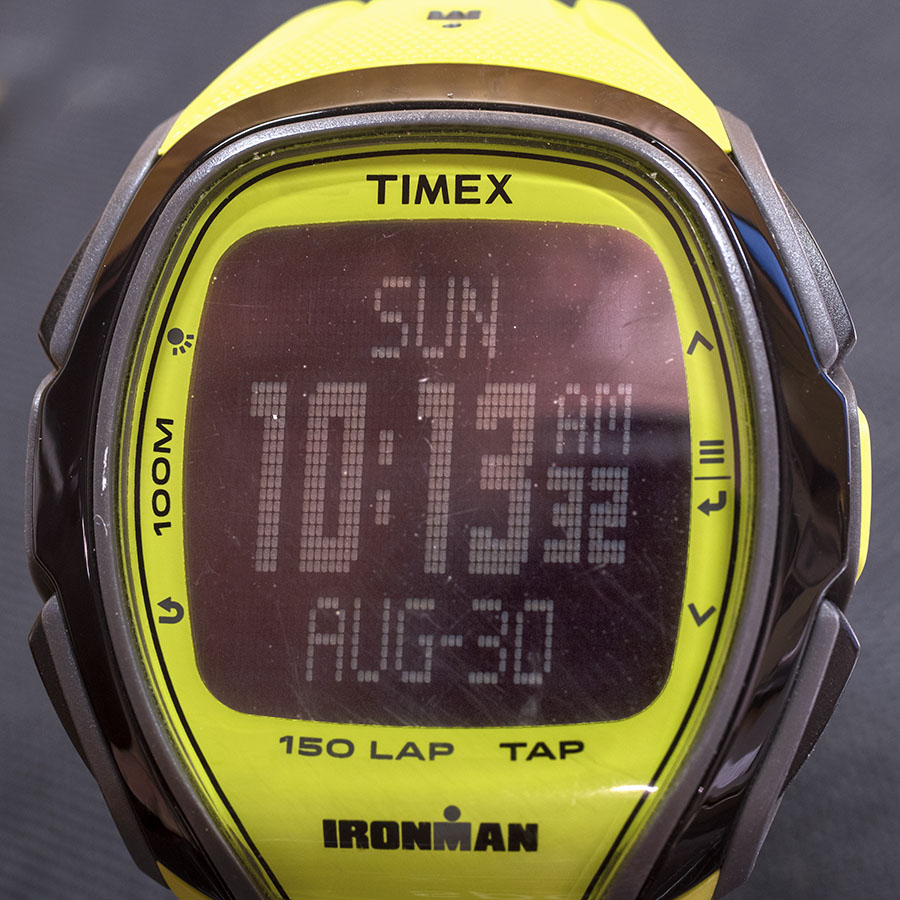
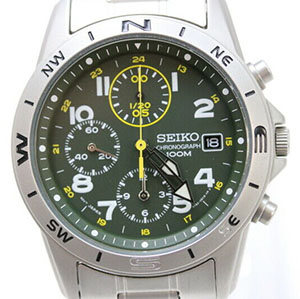 The first one I’ll mention is the green-faced, military-styled Seiko I wore on the Western America Adventure Ride. It’s a quartz watch and it’s not a model that was imported by Seiko’s US distributor (which doesn’t mean much these days; I ordered it new from a Hong Kong-based Ebay store and it was here in two days). But I like the fact that I’ve never seen anybody else wearing this model.
The first one I’ll mention is the green-faced, military-styled Seiko I wore on the Western America Adventure Ride. It’s a quartz watch and it’s not a model that was imported by Seiko’s US distributor (which doesn’t mean much these days; I ordered it new from a Hong Kong-based Ebay store and it was here in two days). But I like the fact that I’ve never seen anybody else wearing this model.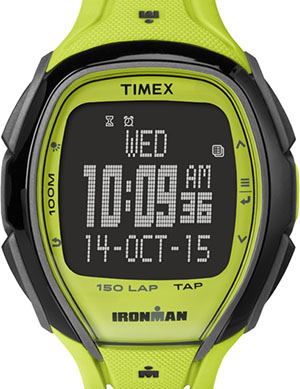 Next up is the safety-fluorescent-green Timex
Next up is the safety-fluorescent-green Timex 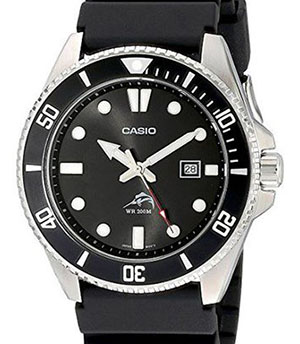 The last one is a
The last one is a